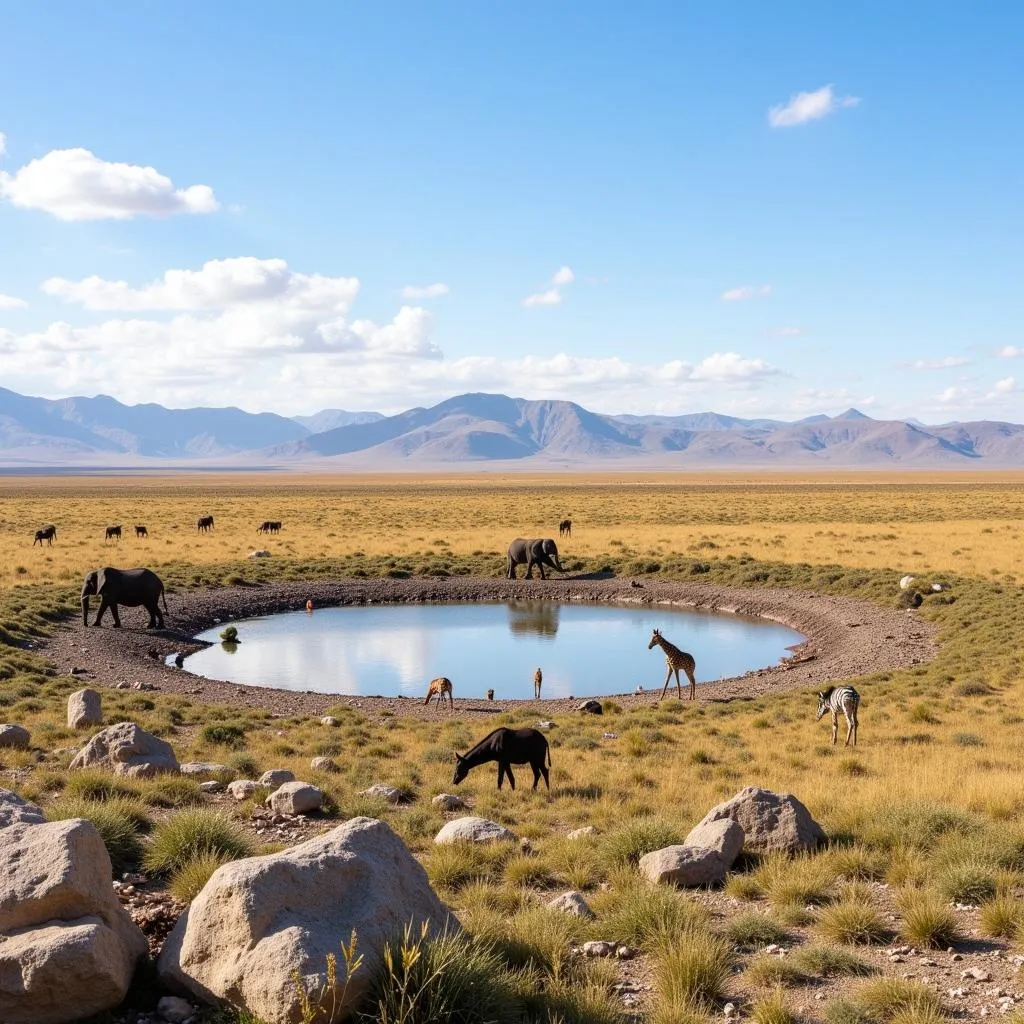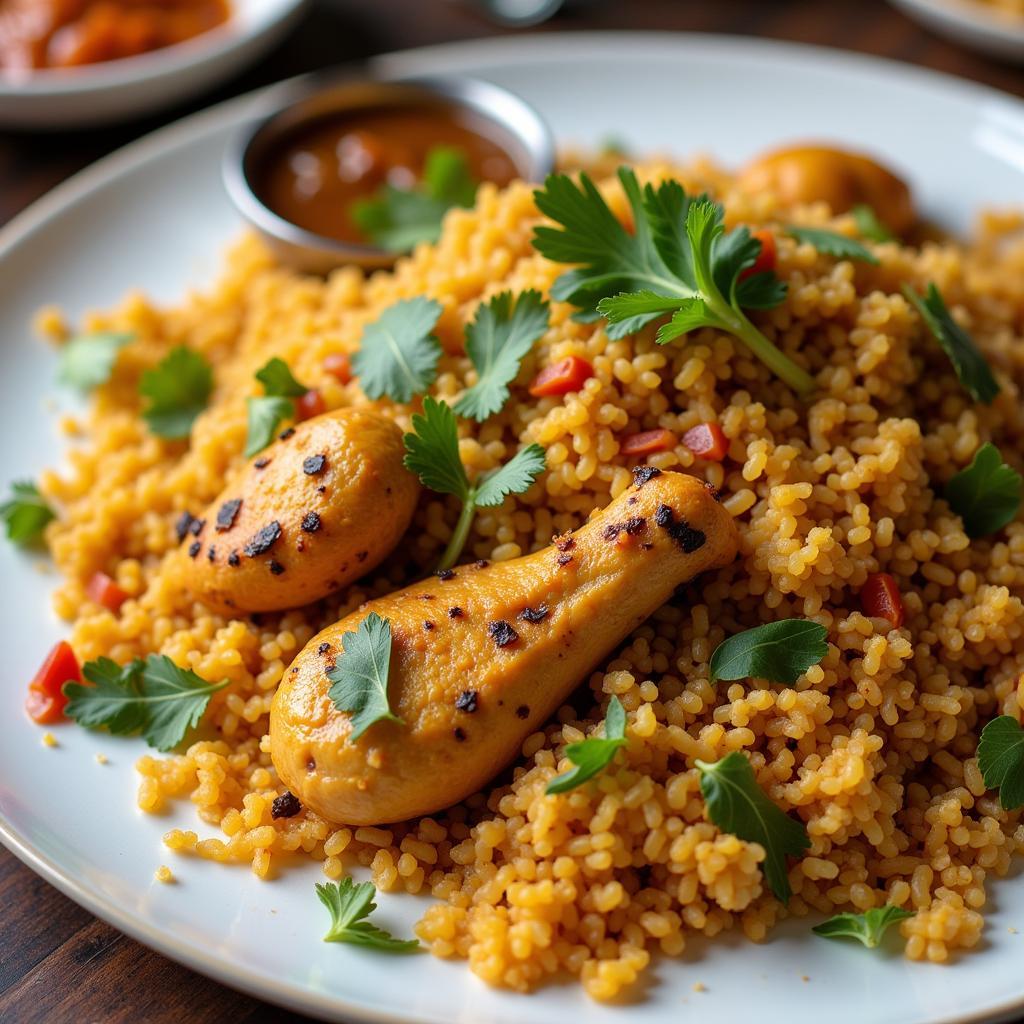Exploring the Soul of Sound: The African Horn Instrument
The African Horn Instrument, a powerful symbol of cultural heritage and artistic expression, holds a captivating allure for music enthusiasts and cultural explorers alike. From the haunting melodies echoing across the savanna to the vibrant rhythms fueling communal celebrations, these instruments embody the very essence of African Life.
A Diverse Orchestra of Sound: Types of African Horn Instruments
Contrary to its singular name, the “African horn instrument” encompasses a diverse family of wind instruments, each crafted with unique materials and techniques, resulting in a rich tapestry of sounds.
Natural Horns: Embracing Nature’s Symphony
Many traditional African horns utilize readily available materials like animal horns, tusks, and gourds. The Kudu horn, for example, fashioned from the majestic Kudu antelope’s horn, produces a deep, resonant sound often used for ceremonial purposes or communication across vast distances.
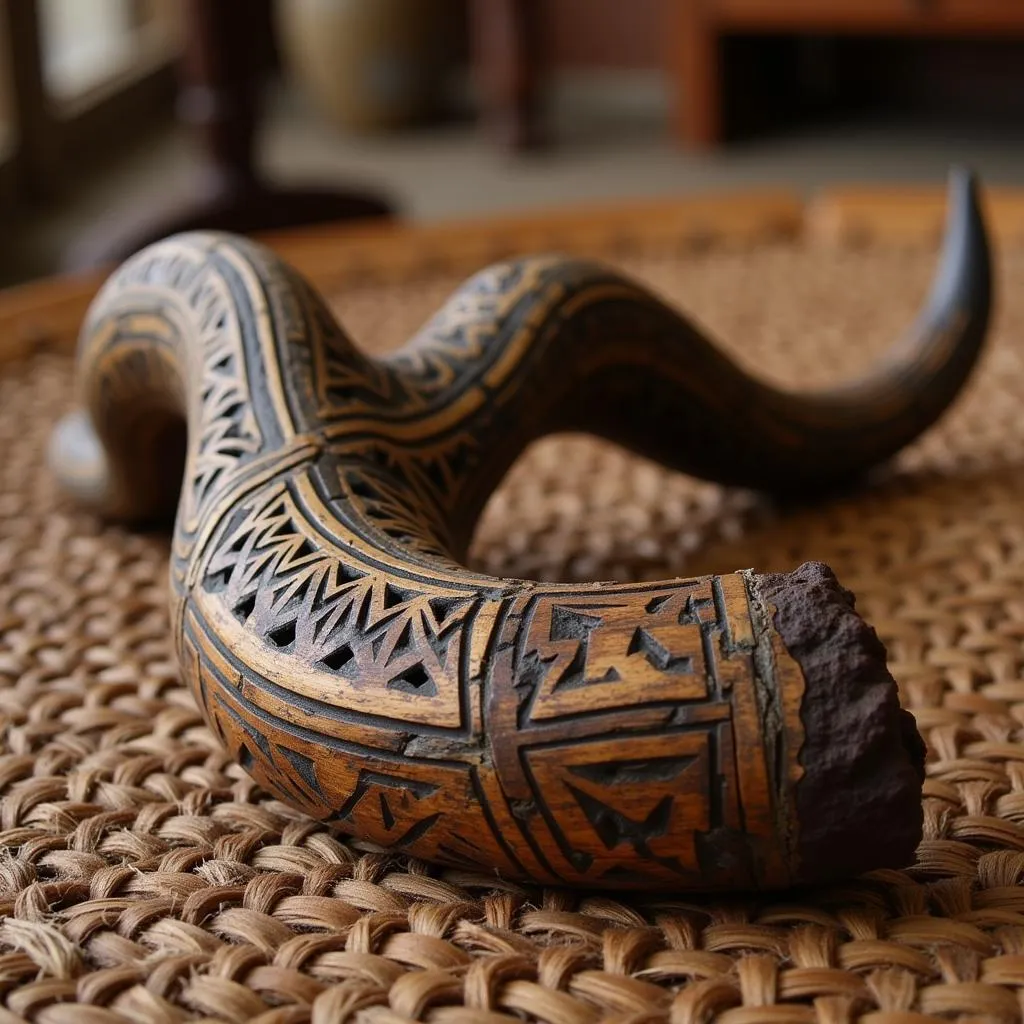 African Kudu Horn
African Kudu Horn
Another example is the Animal horn trumpet, often made from horns of cattle or antelope, showcasing the resourcefulness of African artisans. These instruments, with their powerful sound, play a vital role in rituals, ceremonies, and traditional storytelling.
Wooden Wonders: Carving out Unique Voices
Beyond natural materials, wood carving techniques give rise to some of the continent’s most distinctive horns. The Algaita, a double-reed instrument predominantly found in West Africa, features a beautifully carved wooden body and a distinct, oboe-like sound, adding a vibrant flavor to traditional music.
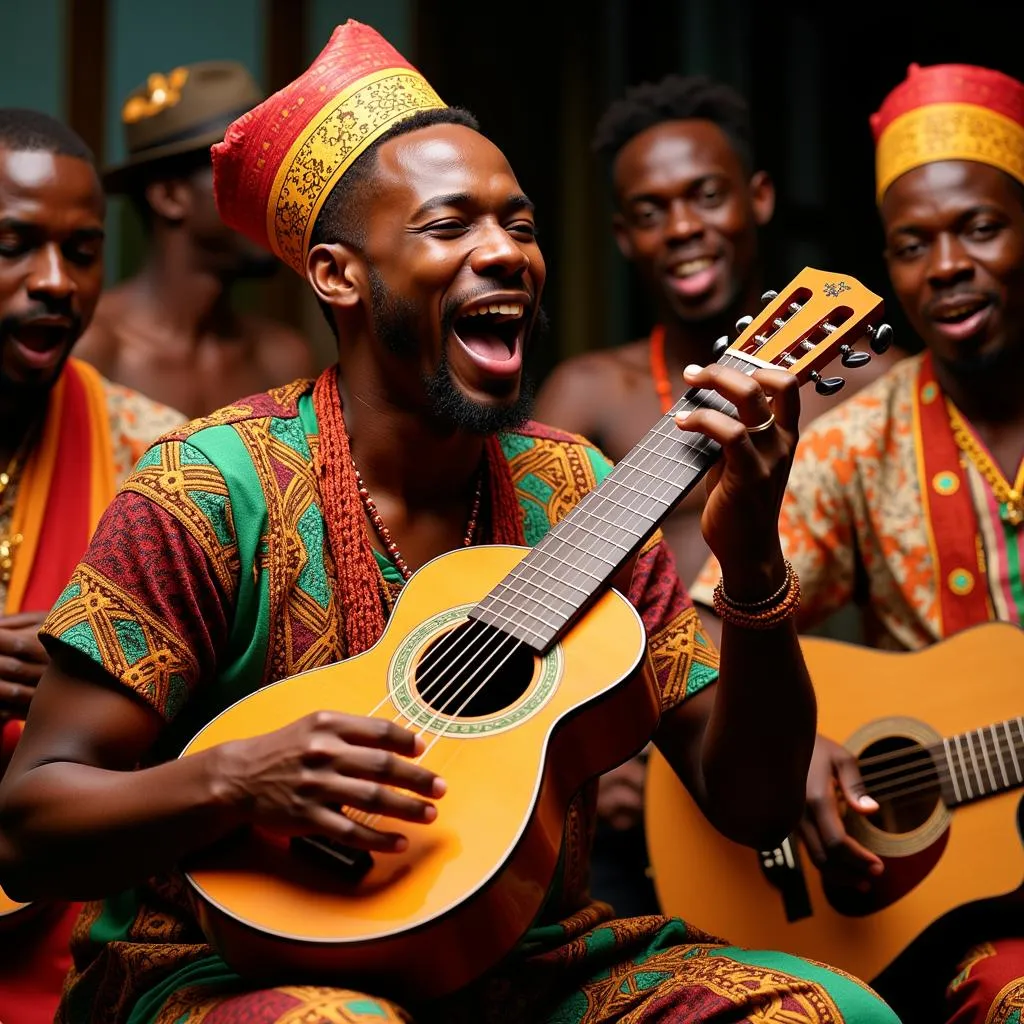 West African Algaita Player
West African Algaita Player
Similarly, the Mozambique trumpet, often crafted from a single piece of wood, exemplifies the craftsmanship of Mozambican artisans. These instruments, with their deep and resonant tones, are central to ceremonies and celebrations.
The African Horn Instrument: More Than Just Music
The significance of these instruments extends far beyond their musicality. They are deeply intertwined with the social fabric of African societies.
Instruments of Communication: Bridging Distances and Cultures
In regions where vast distances separate communities, the powerful sound of horns, like the kudu horn, serves as a vital communication tool. They announce important events, signal danger, or even help guide lost travelers. This practical application highlights the deep connection between the instruments and the environment they are part of.
Ritualistic Resonance: Connecting to the Spiritual Realm
Across the continent, African horn instruments hold profound spiritual significance. They are played during rituals, ceremonies, and ancestral worship, acting as a conduit between the physical and spiritual realms. Their evocative sounds add a layer of solemnity and reverence to these important cultural practices.
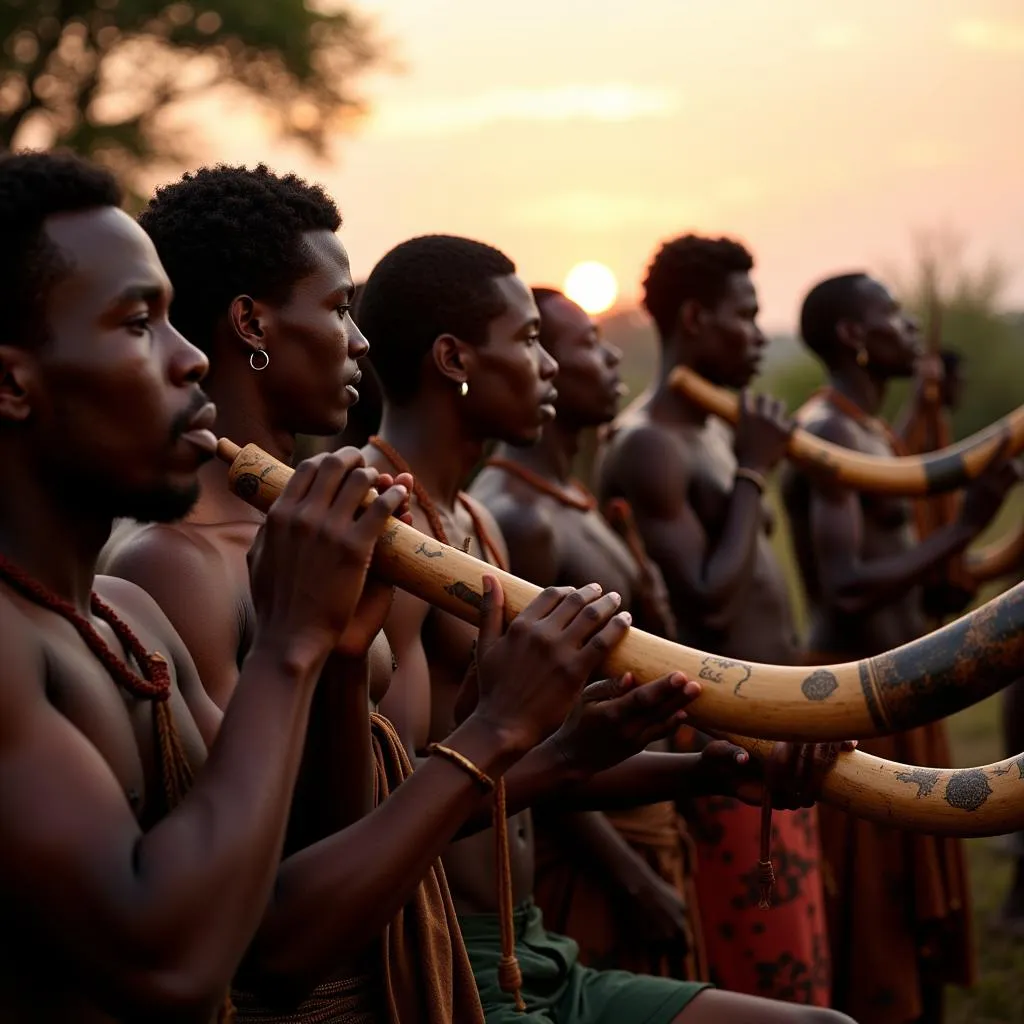 African Tribal Ceremony with Horns
African Tribal Ceremony with Horns
Symbols of Status and Identity: Echoes of Tradition
The ownership and mastery of specific horn instruments often carry social significance, reflecting status, lineage, or skill. These instruments are passed down through generations, becoming tangible links to ancestral heritage and cultural identity.
Keeping the Legacy Alive: The Future of African Horn Instruments
While facing challenges from modernization and the influx of western music, African horn instruments continue to thrive. Contemporary artists are blending traditional sounds with modern genres, introducing these unique instruments to new audiences worldwide.
“The African horn, though steeped in tradition, possesses a timeless quality,” remarks Abeni Faremi, a renowned ethnomusicologist specializing in West African music. “Its ability to adapt and resonate with contemporary expressions ensures its enduring legacy.”
The internet and social media have also played a crucial role in documenting and promoting these instruments. Online platforms allow for the sharing of knowledge, techniques, and performances, fostering a global appreciation for this rich musical heritage.
Conclusion: A Journey into the Heart of African Culture
The African horn instrument stands as a testament to the continent’s rich cultural heritage and artistic brilliance. These instruments, far more than just musical tools, embody history, spirituality, and the very soul of African identity. As their evocative sounds continue to resonate across generations and continents, they invite us all to appreciate the profound power and beauty of African music and culture.
FAQs about African Horn Instruments
1. What are some of the most well-known African horn instruments?
Some of the most famous include the Kudu horn, Algaita, Animal horn trumpet, and Mozambique trumpet. However, numerous other unique and regionally specific instruments exist.
2. Are these instruments still used today?
Absolutely! While facing challenges from modernization, these instruments remain integral to traditional ceremonies, rituals, and music across the continent.
3. Where can I learn more about these instruments?
Many online resources, museums, and cultural centers offer information about African music and instruments. Additionally, seeking out performances by African artists is a great way to experience their captivating sounds firsthand.
4. Can I learn to play an African horn instrument?
Certainly! Many musicians and cultural institutions offer workshops and lessons. You can also find instructional videos and resources online.
5. How can I support the preservation of this musical heritage?
Supporting African artists, attending concerts, purchasing their music, and promoting their work are excellent ways to contribute.
Do you have any other questions about African horn instruments? We would love to hear from you!
For more information about African music and culture, please explore our other articles:
Contact us for assistance:
Phone Number: +255768904061
Email: kaka.mag@gmail.com
Address: Mbarali DC Mawindi, Kangaga, Tanzania. We have a 24/7 customer service team.
